The Dirt on Mineral-Based Garden Soils
It may be time to rethink everything that you were taught about 'good' garden soils.
I remember a time (ok it was last week) when a fellow horticultural professional told me her idea of 'good soil' in the garden; rich and heavy, lots of organic matter and full of nutrients, sound familiar? She also suggested that we add mushroom manure and top soil to an underperforming bed, turning it in before planting a floral display, always reaching for that ideal, 'black gold'.
The more I look at what's around me: scholarly articles, naturalistic planting projects and even instagram posts, the more I question previously accepted gardening wisdom. I once heard someone say, healthy plants are about everything other than the plants.
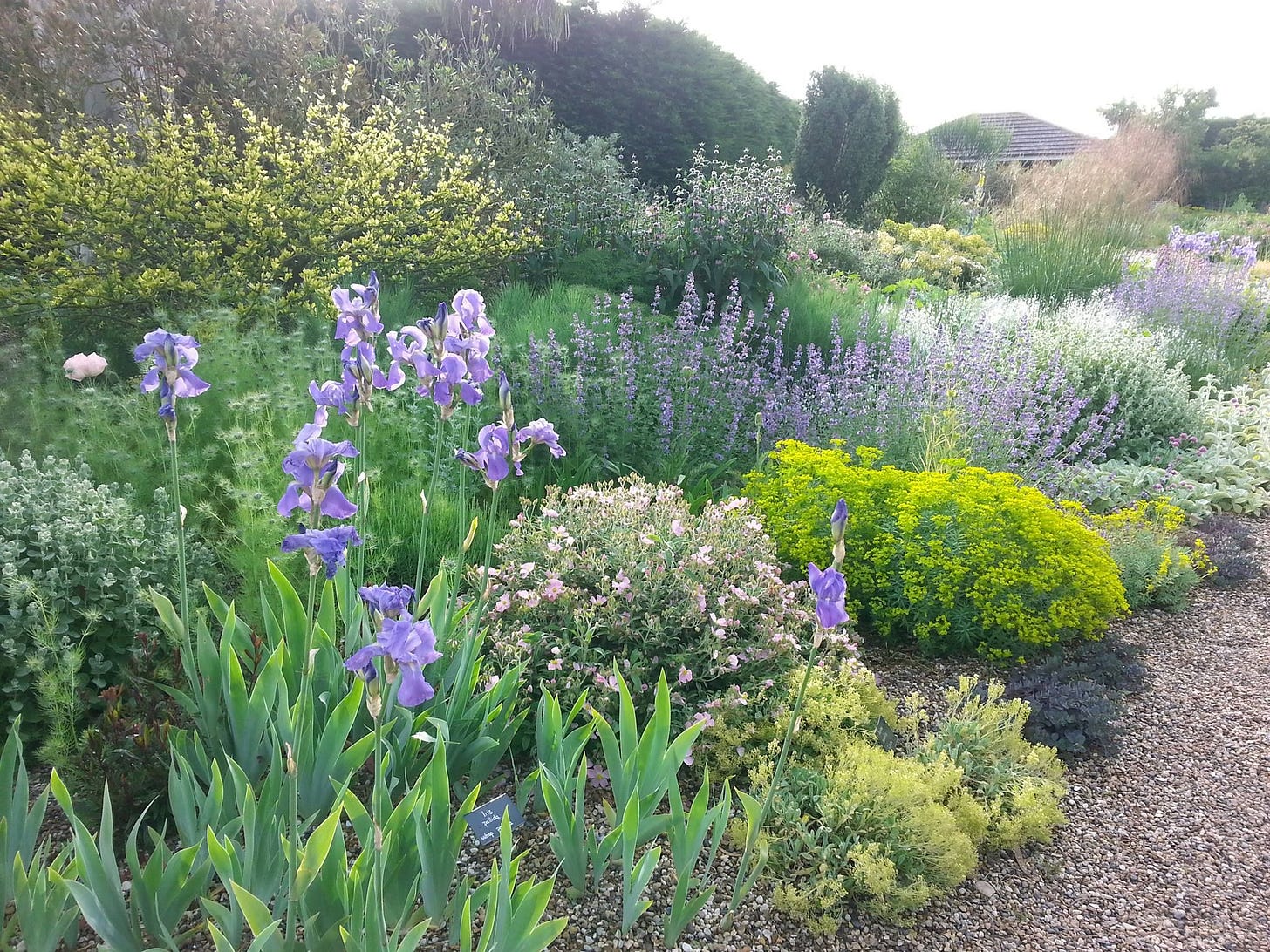
Beth Chatto's gravel garden
At Virens Studio, we always attempt to work with whatever soil conditions are present. Some people prefer to work only with 'new' sterile, weed-free soils and substrates, but we believe that soil is a precious resource that is not only full of life but also sustains the majority of life on the planet. So why would you want to mess with that?
However, we also know that every garden is different and conditions are rarely 'ideal'. Not all areas can be left as is, so you must consider your options and choose what you feel is best on a case by case basis. All land and soils have a history that need to be considered when building or renovating a garden. So we've included general information here (based in zone 8) on why we feel that mineral-based soils are full of potential in a sustainable way.
Top Soil
Top soil is the uppermost layer of the soil horizon it's the top 12-25cm (5-10"). It's where organic matter falls on the surface and begins to break down. It has the highest concentration of microorganisms and where most of the soil biological activity happens. Top soil consists of organic matter, mineral particles, water and air. It is home not only to plant and tree roots, some mammals and invertebrates but also: bacteria, actinomycetes, fungi, algae, protozoa, and nematodes (our soil microorganisms). These are what give soil its smell, structure and functionality.
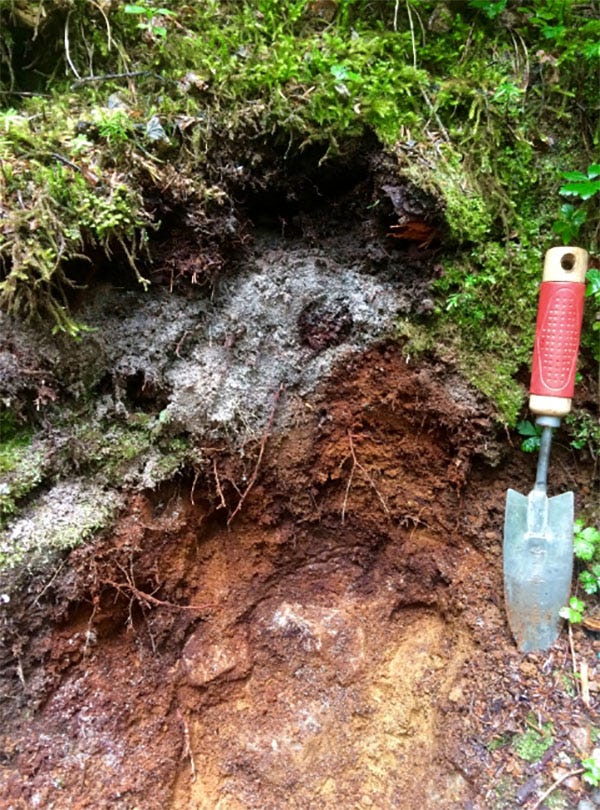
It takes somewhere between 500 and a 1000 years for just one inch of top soil to form naturally and yet we think little of disturbing it. We scrape it away and dump it or seal it under concrete when we build, till and turn it for crop production and sterilize and bag it for sale at garden centres. The world loses roughly 23 billion tons of good soil each year. At this rate, it will all be gone within 150 years (D. Montgomery).
Soil Conservation
The good news is that we're starting realize the importance of soil as a natural resource. There is a team of international researchers that are putting together global standards to monitor soil biodiversity (Soil BON - soil biodiversity observation network). This is being done in the hopes that it will soon become a consideration when conservation areas are chosen and future protection policies are created. Which means, that in addition to important animal or plant habitat being conserved for future generations, now areas with significant soils can be too.
Garden soils
So what does this mean for our gardens? Well, it turns out that all of those years of taking top soil and adding organic matter, chemical fertilizers and constant seasonal turning aren't that great for garden plants. Most native soils only contain 2-3% organic matter while crop soils (and commercial garden soils) that have been amended are around 6%. In fact very few naturally occurring soils are truly organic-based, they're a rarity that usually occur in cool wet climates.
What we've been doing to build 'good' garden soil has some long standing consequences. Over fertilizing leads to nitrogen burn, nutrient toxicity and salinity, all signs of degraded soils. Tilling breaks up the soil aggregate, disturbs the soil food web and actually kills microorganisms. It disengages the network that allows plants to communicate chemically. This means that your garden is no longer a community of plants (and other organisms) that work together for mutual protection and nutrient/resource distribution.
Plants respond to heavy organic rich soils by exploding in herbaceous growth. This growth is generally weak and short lived with limited root zone activity. The plant community doesn't function when the soil is too rich. A cycle is created where plants are installed, grown, die and are reinstalled seasonally. By allowing plants to experience stress, more energy is diverted to root growth facilitating mycorrhizal relationships, adaptability to changing conditions, and overwintering. The growth is slower but the plants grow naturally into a community. Growth is strong and sustainable, and plants live for much longer. Maintenance is lowered significantly, plantings don't need to be redone every year, less material is removed, watering is reduced as plant roots are deep and healthy.
Aggregate Soils and Mulch
In fact, horticulture at large has been stepping away from heavy organic soils for some time. From Beth Chatto to Piet Oudolf many gardeners have cottoned on to the benefits of working with leaner mineral-based soils.
When Beth Chatto started to build her now famous garden in the 1960's she couldn't have know where it would lead. Through trial and error she began planting material in the various parts of her property that suited the existing conditions, rather than trying to change them. Her gardens have now become a key stone of the, right plant-right place school of thought. Her gravel garden in particular is one of the best known and most successful gardens utilizing the native lean, dry soils in what was once a car park. Here a hugely diverse collection of plant material thrives without ever being watered. Her skillfully planted gardens and carefully kept notebooks continue to be a source of inspiration and joy for many garden addicts seeking a better way.
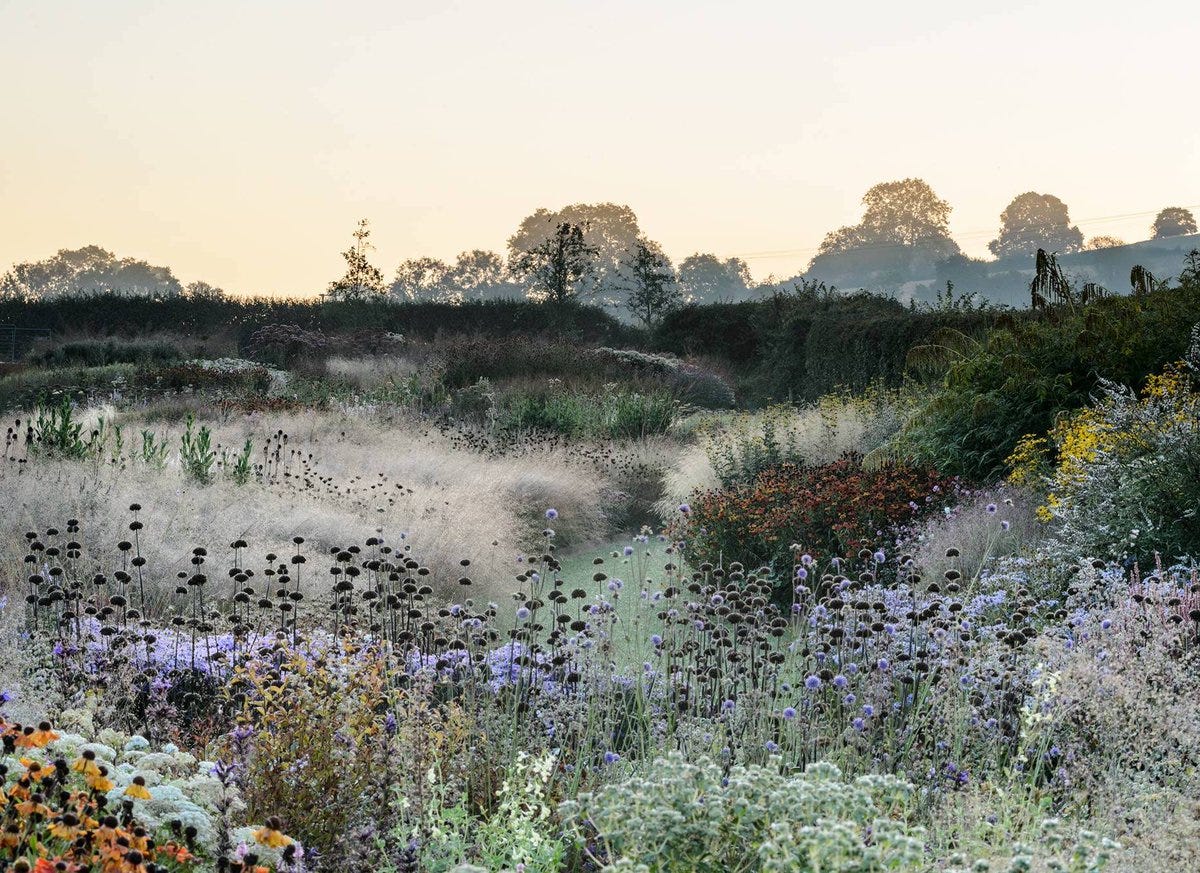
Through the work of many like Beth, Mien Ruys and Piet Oudolf, plants people came to recognize and prove the potential of using plant material from naturally less nutrient packed areas around the world (like prairies, alpine areas and the Mediterranean) that were perfectly adapted to mineral-based soils. And so began a paradigm shift usually referred to as, the new perennial movement or more recently, naturalistic planting design. Where thoughtful, ecological practice meets an aesthetic based in natural forms.
Science based evidence
Hermannshof (Germany) is a 5 1/2 acre public garden that became a trial space and show garden for perennial planting communities in the 1980's. It represents a diverse range of plant material on medium to dry, loamy sand soils (zone 8a). Careful records are kept to monitor the combinations and communities that have been installed in order to gather information to be utilized for wide ranging planting projects across Europe (some 30 curated plant mixes are available from wholesale nurseries, ready for use).
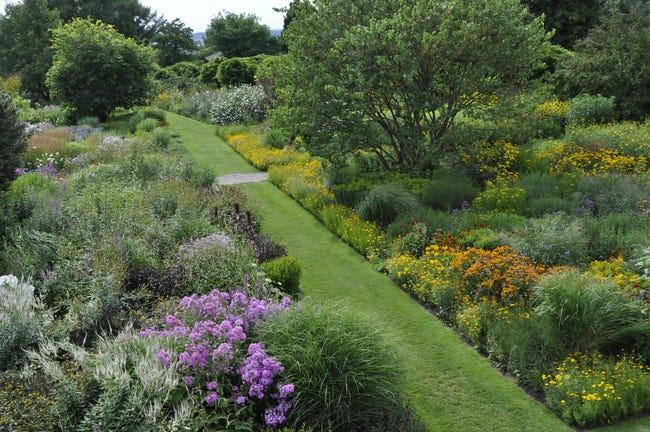
The University of Sheffields centre for Designed Ecology (England) has been working for nearly 30 years to effect change in urban landscapes through scientific trials. Working to find the most effective soil substrates and plant communities to great success (including Sheffields own, Grey to Green project).
Growing Grit (Canada) has been testing the use of various amounts of mineral based mulch for plant health and weed control in urban settings since 2018. They've so far found that 15cm (6') of aggregate (either crushed recycled concrete or a combination of 50% crushed concrete and 50% coarse sand) is most effective.
All of this is telling us that most ornamental plants don't need a lot of nutrition, in fact they thrive with some stress and function best in communities.
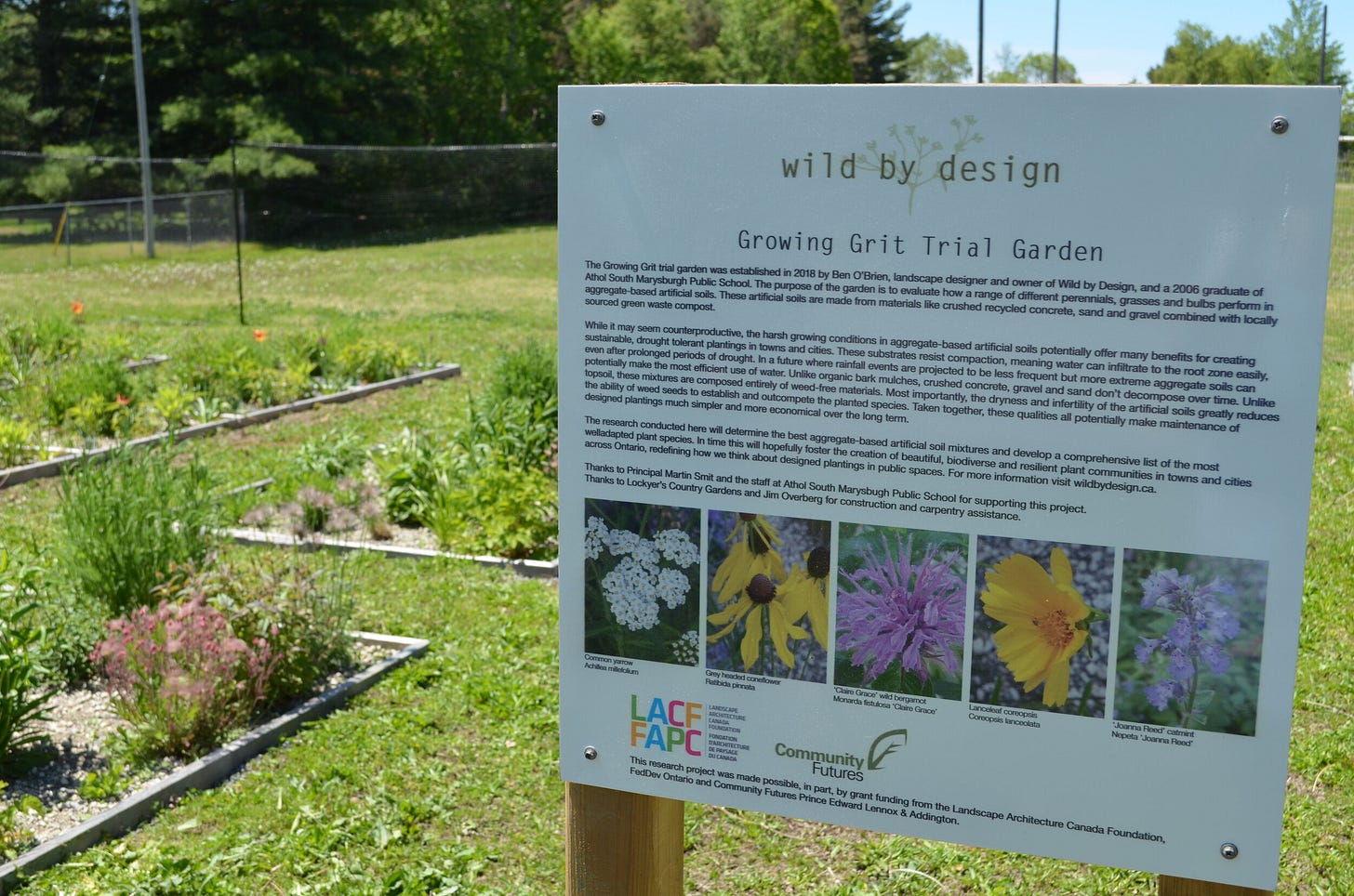
Modern designs
When adding new soil is necessary, designers and contractors are choosing their manufactured substrates carefully. Rather than a soil high that's high in organic matter, they are instead adapting soils to meet the needs of a particular ecosystem. Grey to Green in Sheffield for instance chose a blend of: 70% crushed sandstone aggregate, 20% composted green waste and 10% sandy silt loam, with a mulch of 100mm sandstone aggregate. This ensures that it meets the needs of the carefully curated plant community but also directs, drains and utilizes the cities storm water runoff.
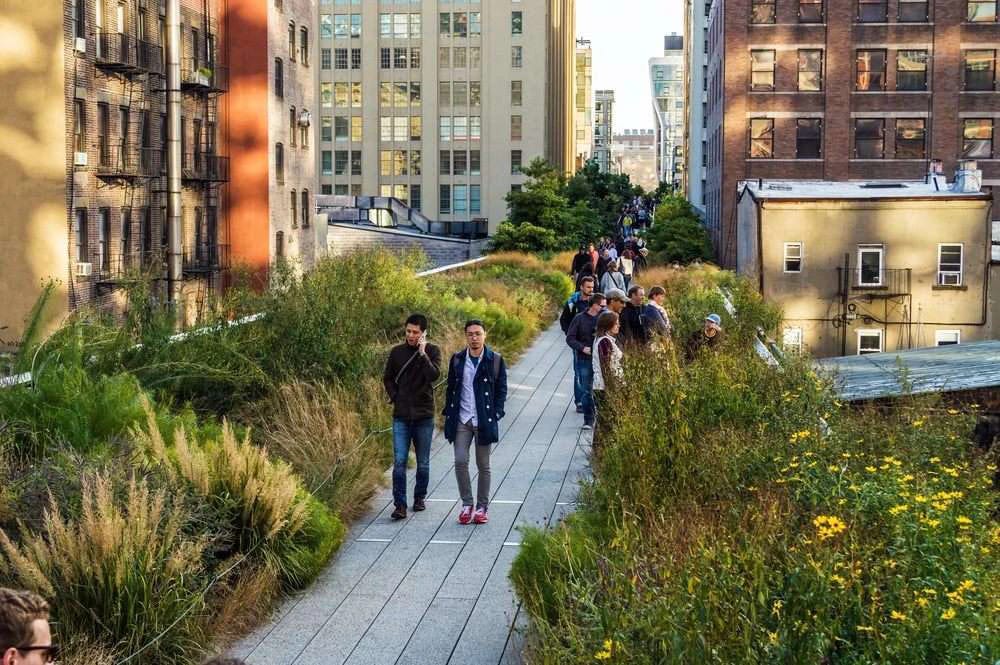
The Highline (Piet Oudolf)
And we see these methods in some the most famous and beloved gardens across the globe, by designers that are as diverse as the work that they produce. Take a deep dive into their plantings if you haven't already.
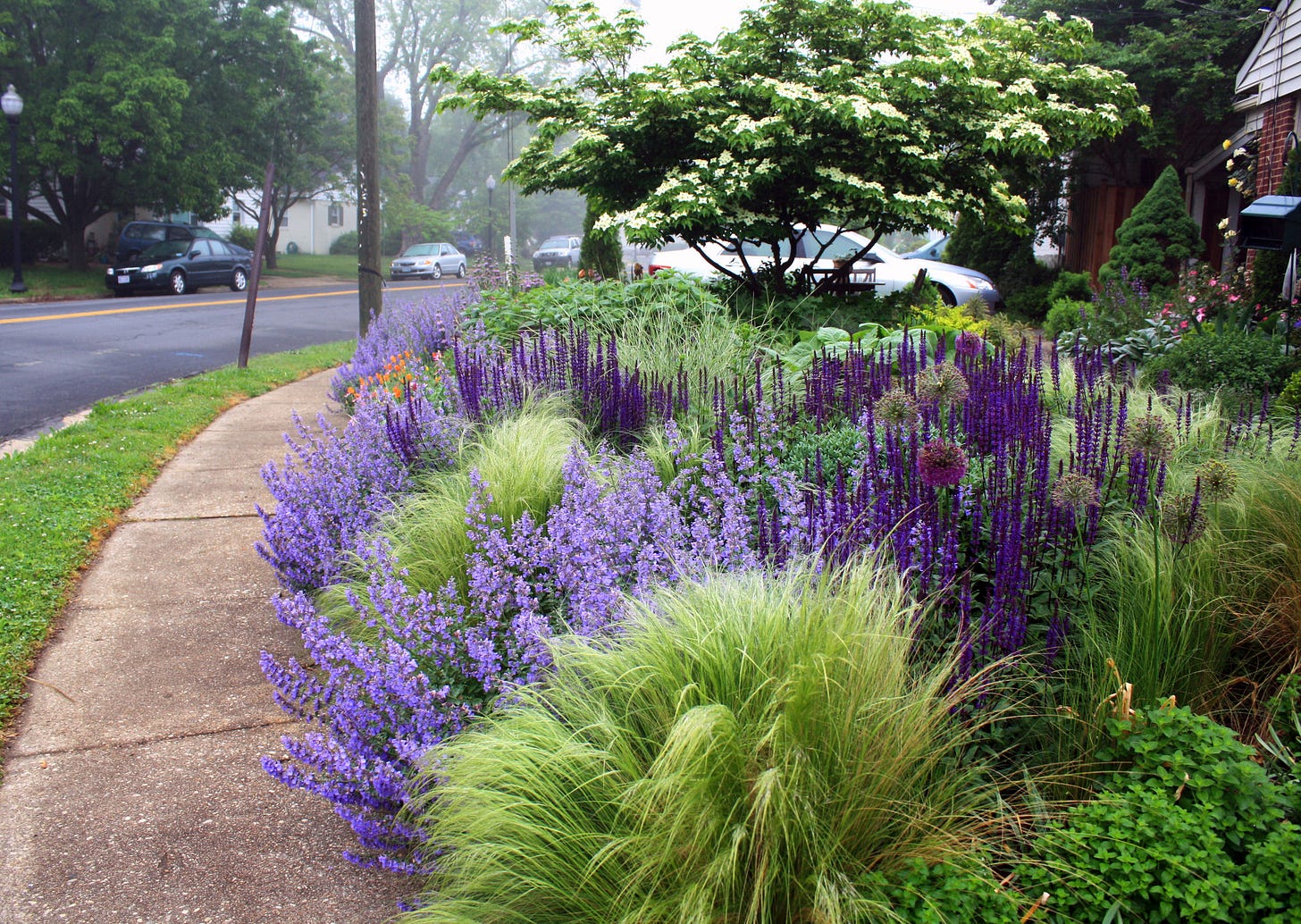
Piet Oudolf (Highline, Lurie garden)
Tom Suart-Smith (RHS Bridgewater, Le Jardin Secret)
Nigel Dunnet (Olympic Park meadows)
James Hichmough
Olivier Filippi
Jinny Blom
Dan Pearson (Delos at Sissinghurst)
Claudia West & Thomas Rainer (Phyto studio)
Working with What's There/ Methods
No-till, sustainable and organic methods are all making a return to the mainstream. As we realize the importance of building well functioning soil systems, we all need to start changing our gardening habits. So, how do we continue to grow beautiful plants in a better way?
Knowing your space is an important component. Some basic soil testing and observation of the site will tell you where to start. Soil texture, composition and compaction levels, drainage and resource availability all matter. Climate, exposure and existing plant material will also help you to see where your unique challenges lie. Then we would suggest you check out some sustainable methods that can help you meet those soil-based challenges and turn them into advantages.
Amendment
If you're trying to rebalance a soil that's already heavy on organic matter, consider amending it with a mostly mineral soil. Sand, gravel, crushed concrete and rock dust can all be added (depending on the needs of the garden) as a mulch. It will eventually work its way into the soil structure over time, adding trace elements, improving structure and giving great weed control.
Plant choice
Choose plants that suit and are already adapted to the conditions that exist in your space. There's a huge variety of material available at large and small nurseries in your local area that will thrive in your garden with just a little thoughtful maintenance.
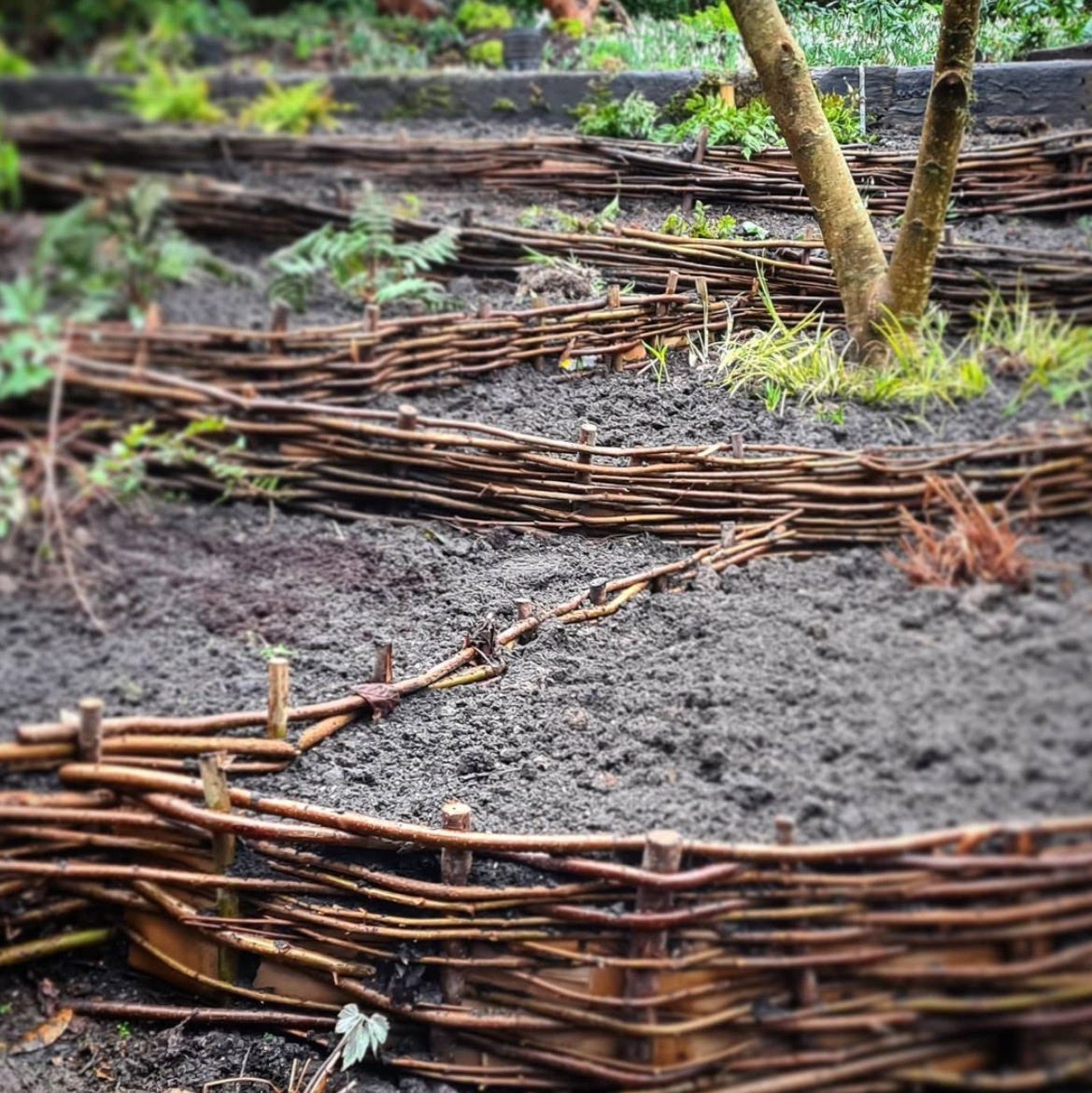
Wattle erosion control
Terracing
Can be done in many ways to help stop soil erosion in sloped areas, woven willow (wattle fencing), rocks and boulders, concrete, stone and wood can all be used to create everything from simple to professionally engineered terracing depending on the severity of the slope involved.
No-till
There are loads of great diy methods that are detailed online, but the basics involve layered mulches that improve soil without disturbing it. Planting is done in small pockets just big enough for plant roots. This helps stop soil erosion, keeps weeds out and promotes healthy soil biodiversity by simply allowing the natural processes do their thing without disruption.
Chop and Drop
Simply chopping up garden debris and leaving it distributed across the soil surface, or in small pockets can help build healthy soils. Smaller pieces break down more quickly and they act as a mulch to protect the soil surface area, retain moisture and prevent weeds.
Organic Mulches and cover crops
Protect areas of bare soil from erosion, while adding nutrients and retaining moisture. Mulches can consist of many materials from bark to gravel and recycled crushed concrete depending on what's available in your local area.
Cover crops are a kind of living mulch, acting in much the same fashion as other mulches. However some plants have added benefits, like clover to fix nitrogen or alyssum for added pollinator food. It's worth doing a little research when choosing a suitable cover crop, there are usually seed varieties and mixes available through local sources each with unique characteristics.
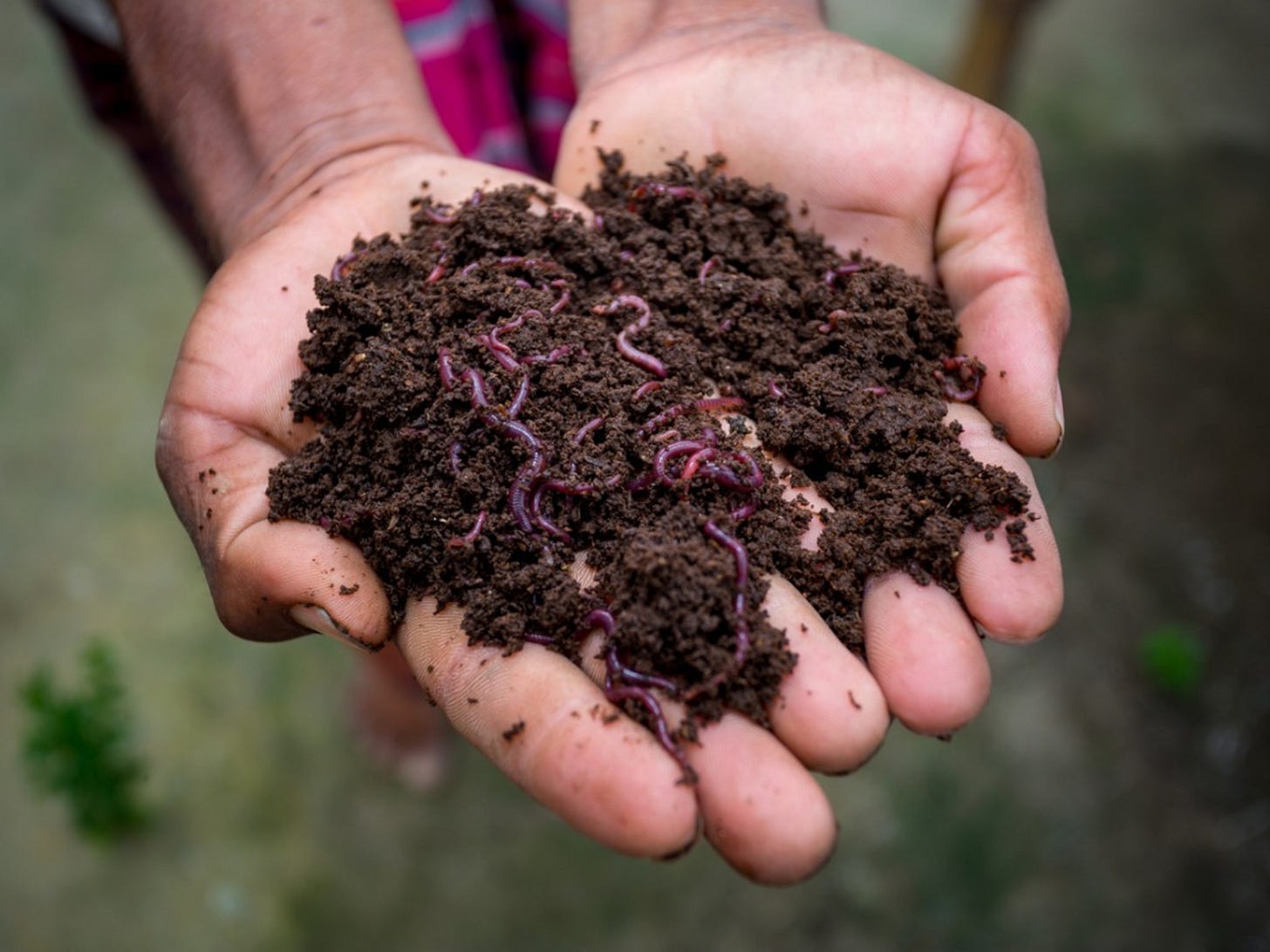
Vermoculture
Worm castings
Produced by earthworms usually in bins or boxes, worm castings are a natural fertilizer that can add nutrients to soil without burning, much like aged compost. You can purchase or make worm boxes yourself. Many tutorials and products are available online and often bagged or bulk castings can be bought at nurseries.

Aerated compost tea
Soil/compost tea
Using healthy soil and or compost to make a 'tea' that can be added to damaged or sterile soils can boost soil biodiversity. Its thought to give your soil a head start and inoculates it with locally beneficial organisms. There are lots of systems available online and in diy tutorials to make your own teas. You can also purchase some products that are meant to be more convenient for those with less time on their hands. Again, well worth doing a little research in your own area.
Soil inoculation
Involves adding small amounts of specialized bacteria to soil that promote plant health. So rather than waiting for these bacteria to form at regular rates, your garden gets a head start on the beneficial symbiotic relationships that form between plants and soil bacteria. Various types and forms of inoculants can be found at nurseries in most areas.
Chemical usage
Finally, we suggest you steer clear of using any chemicals in your green space whenever possible. Fertilizers, herbicides and pesticides are all detrimental to the health of your soil, killing those all-important micro organisms.
Long story short
We can all help save, conserve and build healthy functional soils by making a few changes to our routines. So, next time you're working in the garden (or building a new one), enjoying the plants and wildlife, think about giving something back to the ecosystem. Reciprocity builds good karma ;)
-Sara-Jane & Alicia at Virens Studio
We're planting design specialists in the Vancouver, Canada area that love to build exceptional garden spaces and chat all about it. And don't forget to stay in touch @virensstudio on instagram.

Delos at Sissinghurst (Tom Stuart-Smith)



